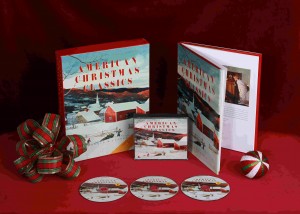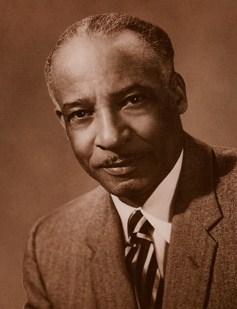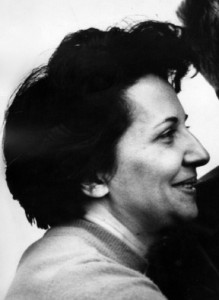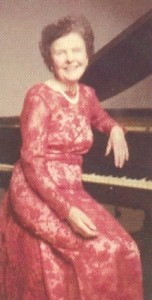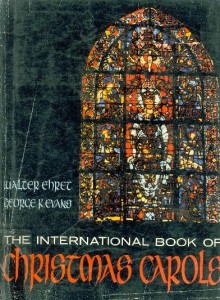A Special Christmas Music Gift
We all love to get into the Christmas season and set the right mood for love and merry making. This is also the right time to look for special gifts and send them to our loved ones just to let them know how much they mean to us. Just as we are reminded by the timeless hit of the Little Drummer Boy, no gift will ever be ideal for Christmas than the gift of a real Christmas classic. But unfortunately, it is a little bit of a task to locate and find such gifts and send them out during Christmas.
American Christmas Classics – FREE SHIPPING until Christmas using Code CHR2015!
Despite the fact that it is not easy to find the perfect gift to send out during Christmas, there is not a total blockade to prevent you from thinking out of the box. It is still possible to come up with a nice sweet collection of American Christmas classics and wrap them into a gift box that will be much appreciated, especially by those folks from the Baby Boomer era. Fortunately, with a little searching, there are several places where you can find such gift collections. One such place is Christmas Classic Ltd. It produces exquisite Christmas music collections that will make perfect Christmas gifts at any time. To boot, American Christmas Classics is available at $29.95 . . . a 50% Discount from the original price of $59.95!
Included in the American Christmas Classics collection are 47 all-time favorite classic Christmas songs featuring music legends Bing Crosby, Kate Smith, Andy Williams, Gene Autry and other celebrated singers. But the collection is not only about music.
This cultural treasure includes a lavishly illustrated masterpiece book about the stories behind favorite American Christmas carols and songs featuring period fine art and illustrations from America’s great artists, such as Norman Rockwell, Henry Ossawa Tanner, and Grandma Moses, as well as images of nostalgic Victorian Christmas cards and notable magazines of yesteryear as The Saturday Evening Post, Scribner’s, and LIFE.
This Christmas collection has been described as a sumptuous and ideal gift package that will bring boundless joy this season. For customers nostalgic for their Christmas past, this is the perfect Christmas gift.
Act today for FREE SHIPPING using Code CHR2015
Christmas Songs and Carols to Brighten the Holidays
Let us make this “a season to be jolly!” Despite our troubles, let us rekindle the fond memories of Christmas past for our parents, grandparents, and children. Let us touch the sentimental strings of carefree and youthful days that once consumed Baby Boomers and our military veterans.
Let us start with the idea of organizing some of our holiday festivities around the theme of singing carols and holiday songs. It doesn’t get better than hearing joyous Christmas songs while hauling in and trimming the Christmas tree.
Some familiar old-timers reminisce about the joy of Christmas songs and carols.
The late Andy Williams, a popular singer of the 1960s and 1970s, described celebrating the Christmas season in an interview with me several years ago. “It was such a great time,” Andy said, as he and his three older brothers used to go house to house singing carols and drinking eggnog in Wall Lake, Iowa.
“Those were the days when you knocked on a neighbor’s door and opened unlocked doors.” The talented singer who in later years starred at his Moon River Theater in Branson, Missouri, suggested it would be a nice thing to renew the tradition of caroling around the neighborhood, or one’s home town, “because it is such a wonderful thing to do.”
Della Reese, familiar to television viewers for her earthly role in the popular 1994-2003 program “Touched by an Angel,” wrote to me at the same time “I just love the way Christmas carols change the spirit and attitudes of us all.” An accomplished singer and ordained minister, in addition to her acting skills, she described “Silent Night” as a magnificent thought, and her favorite holiday tune as “Chestnuts Roasting on an Open Fire” sung by the mellifluous Nat “King” Cole. The irrepressible Della added, “In fact, I don’t really start my Christmas in earnest until I hear Nat sing “The Christmas Song.”
The late country and pop singer, Gene Pitney, enjoyed considerable success on both sides of the Atlantic through the mid-1960s with more than twenty Top 40 singles, including hits “Town Without Pity” and “Only Love Can Break a Heart.” In an e-mail Gene fondly recalled carving the turkey when his large family gathered for the holidays and the singing of Christmas carols. “I prefer religious carols,” he said, “that have not become jaded by commercial overuse. They represent the essential Christmas message.”
Take a cue from Andy, Della, and Gene. Start this holiday season with the idea of organizing your festivities around the theme of singing carols and holiday songs.
Celebrate with friends and family at home beside the fireplace or piano, or while trimming the Christmas tree, with traditional classics as “O Little Town of Bethlehem,” or “The Twelve Days of Christmas,” or singing such nostalgic holiday fare as “White Christmas,” “Have Yourself a Merry Little Christmas,” or “Rudolph the Red-Nosed Reindeer.”
Encourage friends to join in the singing of “Silent Night” and “We Wish You a Merry Christmas” in front of your neighbors’ city stoop or country home. Better yet, why not sing for our senior citizens at nursing home or an assisted care facilities, or at a food kitchen for the poor and homeless, or a military hospital for our aged veterans or wounded warriors? Rest assured your caroling there will be met with open hearts and ready smiles.
Or you might volunteer to take part in the local performance of Handel’s “Messiah” for other worthy causes, or support a local church by attending its vesper service where awe-inspiring Christmas motets and concertos may reverberate, and where the reverential carol-hymn “O Come, O Come, Emmanuel” soars to celestial heights on the wings of angels. This is truly music for the soul.
Though the custom of singing Christmas songs and carols in front of neighborhood homes may seem quaint and outdated, let us redouble our efforts, especially this year, to engage young and old alike in reviving a wonderful Christmas tradition that is never out of fashion.
Ron Clancy is a Christmas songs and carols historian, and the author of illustrated Christmas music gift collections at www.christmasclassics.com.
Christmas Classics PERSON OF THE DAY: James Kimball Gannon
On this day in 1900, James Kimball Gannon was born in Brooklyn, New York. Better known as Kim Gannon, he was an American songwriter and lyricist for the perennial Christmas favorite I’ll Be Home for Christmas.
Gannon attended St. Lawrence University and as a senior wrote the school’s alma mater song The Scarlet and the Brown. A proud graduate of St. Lawrence in 1924, he had every intention of becoming a lawyer. The Great Depression delayed that career pursuit and in 1930 he was working as a salesman for a utility company. By 1934 he passed the New York state bar examination, but five years later the songwriting bug struck and soon after he composed his first commercial song, For Tonight.
The year 1942 found Gannon writing songs during the “swing era” and for films including the lyrics of the film title song Always in My Heart that earned him an Academy Award nomination for Best Song. He replicated that achievement twice more: 1) Too Much In Love for the film Song of the Open Road in 1944, and 2) Endlessly in 1945 for the film Earl Carroll Vanities. But in between he collaborated with Walter Kent in 1943 to produce I’ll Be Home for Christmas. Gannon also wrote songs for the films Powers Girl and If Winter Comes before Broadway beckoned in 1951 when he teamed up with Walter Kent again on the score for Seventeen.
Despite his success with film and Broadway, Gannon is best remembered for his popular and wistful Christmas lyric I’ll Be Home for Christmas. First recorded by Bing Crosby in 1943, it has since been recorded more than three hundred times and is an important part of American Christmas Classics.
The amiable Kim Gannon, who died in 1974, was always true to his alma mater. In his will he stipulated that after his wife Norma’s passing (she died in 2006), 30% of all royalty proceeds from his songs were to go to St. Lawrence University. The majority of those royalties, you can bet, come from his 39-word holiday classic I’ll Be Home for Christmas.
Christmas Classics PERSON OF THE DAY: William L. Dawson
On this day in 1898, William Levi Dawson was born in Anniston, Alabama. He was an acclaimed African-American composer, conductor, and trombonist who wrote a wonderful arrangement of the Christmas spiritual Mary Had a Baby, a carol with two distinct lyrical texts. In some circles Dawson was called the “father of the Negro spiritual” although such a sobriquet might be contested by the John Works family also noted for its scholarship of Negro folk music.
Dawson was determined to earn a music education. Although black students were prohibited from attending classes, several professors helped him to clandestinely pursued his bachelor degree at night from the Horner Institute of Fine Arts in Kansas City. By day he taught at the city’s Lincoln High School. His formal studies continued at the Chicago Musical College and the American Conservatory of Music, the latter from which he earned his master degree. He also enjoyed a career as a trombonist for both the Civic Orchestra of Chicago and Redpath Chautauqua, a campground assembly that usually gathered during the summer for music events or literary, moral, and scientific lectures.
The composer’s career, however, was primarily devoted to teaching at the college level. In 1931 he went to teach at Tuskegee University in Alabama where he soon himself the founding chairperson of its School of Music. During his tenure at Tuskegee, ending in 1956, Dawson achieved greatness as a composer. His body of work included arrangements and variations of spirituals, including his popular Ezekiel Saw the Wheel, King Jesus is a-Listening, and Jesus Walked the Lonesome Valley, and other spirituals that are widely published and regularly performed by school and community choral programs. In the classical realm, he is best known for Negro Folk Symphony, reputedly the first of its kind by a black composer, which premiered in 1934 with the Philadelphia Orchestra under the direction of the dynamic Leopold Stokowski.
The lyrical text of Mary Had a Baby may date from the 18th century when it was probably sung at religious revival camp meetings where a “call and response” technique was utilized to unify the congregation in worship. After the Civil War, this musical style became more prevalent in black churches, especially those of the rural South, whose members learned it from their ancestors, almost all of whom were slaves.
As with most of his arrangements, Dawson employed black folk song idioms to Mary Had a Baby, an important addition to AMERICAN CHRISTMAS CLASSICS . Inspired by the spiritual text, he creates a heightened sense of dignity, despite the humble manger setting, of Mary the mother giving birth to her baby who is richly exalted as “King Jesus.”
Christmas Classics PERSON OF THE DAY: William J. Kirkpatrick
On this day in 1921, William J. Kirkpatrick died in Philadelphia. The son of a school teacher and musician, he was responsible for writing one of the more familiar arrangements for Away in a Manger.
Born in Duncannon, Pennsylvania, Kirkpatrick went to Philadelphia to learn music and carpentry. His ambition was to be a violinist, which was hampered as he plied his trade as a carpenter. At the age of thirty-four he began to devote more time to sacred music after joining the Wharton Street Methodist Episcopal Church in Philadelphia. As a member of the Harmonia and Handel and Haydn Sacred Music Societies, Kirkpatrick gained more exposure to the principal choral works of great composers. After the death of his first wife in 1878, he finally gave up his trade and dedicated his life solely to sacred music and composition, as well as being involved with the publication of forty plus hymnals.
Kirkpatrick’s tune for Away in a Manger, commonly known as The Cradle Song, is most used in England. The Cradle Song was first written in 1895 for the musical Around the World with Christmas. In the United States the tune most heard for Away in a Manger is associated with James Ramsey Murray (see my March 11, 2011 blog).
The anonymous lyrics for Away in a Manger likely were written by a member of the German Lutheran colony in Pennsylvania during the late 19th century. The words for the first two stanzas may have first appeared in 1885 in the Little Children’s Book for Schools and Families, a publication of the Evangelical Lutheran Church in North America. It is possible, however, that they first appeared in the May 1884 edition of The Myrtle, a Universalist Publishing House Boston publication, as Luther’s Cradle Hymn to commemorate the 400th anniversary of the birth of Martin Luther, the great German religious reformer. By the 1940s it was proven conclusively that the original lullaby tune had actually been composed by James Ramsey Murray, supposedly the same person who perpetrated the myth of Luther’s Cradle Hymn. Murray’s lullaby was included in an 1887 Cincinnati collection called Dainty Songs for Lads and Lasses.
Although many modern hymnals attribute the lyrics of the third stanza to John T. McFarland, a member of the American Lutheran Board of Sunday Schools, it is believed he had merely made reference to it. Instead, the third stanza, which first appeared in an 1892 Louisville, Kentucky, Lutheran Church collection titled Gabriel’s Vineyard Songs, was probably the contribution of another anonymous author. This lyrical addition strengthens the inherent tenderness of this renowned American carol hymn.
Three years later Kirkpatrick wrote the tune The Cradle Song for the musical Around the World with Christmas. Again, it is that tune that serves as Kirkpatrick’s arrangement for Away in a Manger.
Pennsylvania Germans and Moravians, besides being credited as the source for the anonymous lyrics of Away in a Manger, were unique in other aspects of Christmas. They celebrated the humble beginnings of the Christ Child by employing a Christmas decoration called a putz (from the German word “putzen” meaning “to adorn”), for the manger scene. The Moravians, furthermore, may even have played Away in a Manger in their trombone choirs that were known to perform from church belfries in Bethlehem, Nazareth, and other Pennsylvania towns with Moravian congregations.
Bethlehem, the site of the first Moravian church built in eastern Pennsylvania, was so named on Christmas Eve in 1742 when construction of the church was completed. That special night settlers sang in one room of the new structure while cows mooed in the other half, which served as a stable. The scene so moved the congregation, reminding them of events surrounding the birth of the Christ Child in another small town eighteen hundred years earlier, that they christened their settlement Bethlehem.
Christmas Classics PERSON OF THE DAY: Gloria Shayne
On this day ninety years ago, Gloria Adele Shain was born of a Jewish family in Brookline, Massachusetts. She changed her name to Gloria Shayne early in her professional career as a pianist and composer. In the 1940s she moved to New York,and it was there where she made her mark.
In the world of Christmas music she is famed for composing Do You Hear What I Hear? in collaboration with her husband Noel Regney, a Frenchman.
The Shayne and Regney union was a story of romance. They met in the early 1950’s when the Frenchman came to the Beverly Hotel in New York, now known as the Benjamin Hotel, where Shayne was playing the piano. Both were duly smitten on their chance meeting and a month later the two lovers were married.
Do You Hear What I Hear?, although often taken for a Christmas carol, was actually composed by the husband and wife team as a hymn of peace, one borne out of a sense of desperation and fear of war because of the looming Cuban Missile Crisis. Both composers had not forgotten about the horrors of war. During the World War II years Shayne worked for the Jewish Welfare organization at a time when millions of Jews were being slaughtered by the Nazis. Regney, trained as a classical composer, witnessed its terror first hand when he was conscripted by the German Army, even though he was a Frenchman, but soon deserted it to join the French Resistance.
Shayne and Regney were especially fond of the phrase “Pray for peace, people everywhere!” in the carol’s last stanza because it emphasized the rationale for the song. Somehow their hymn of peace became part of the Christmas carol repertoire, perhaps because of Regney’s lyrical imagery of lamb, shepherd boy, and the Child Jesus sleeping that could easily be associated with the Nativity scene.
Shayne and Regney collaborated on a number of famous songs, including Rain, Rain Go Away first performed by Bobby Vinton and Sweet Little Darlin’ first performed by Jo Stafford. But she also enjoyed success on her own, including writing the music and lyrics for Goodbye, Cruel World, recorded by James Darren, and co-writing The Men in My Little Girls’ Life, performed by Mike Douglas, and Almost There that was first sung by Andy Williams.
Gloria Shayne divorced Noel Regney in 1973. She remarried, and in 2008 she died at home in Stamford, Connecticut of lung cancer. She will be most remembered here for her contributions to Do You Hear What I Hear?, a song of peace that eventually spawned a lovely Christmas carol.
Christmas Classics PERSON OF THE DAY: William Hayman Cummings
In August 1831 William Hayman Cummings was born in Sidbury, England. He was a musician, notable tenor, and organist who may be best known for his wedding of Felix Mendelssohn’s music to the Charles Wesley hymn Hark! The Herald Angels Sing. An accomplished musician, Cummings was educated at St. Paul’s Cathedral Choir School and the City of London School. He was also the founder of the Purcell Society, a reputable singing professor at the Royal Academy of Music and later a principal for the Guildhall School of Music.
Wesley, who co-founded the Methodist Church, originally titled his hymn as Hark! How All the Welkin Rings in the 1739 publication Hymns and Sacred Poems. The carol melody was adapted from a cantata that Mendelssohn wrote as part of his commission to compose music for the 1840 Leipzig Gutenberg Festival. That festival commemorated the 400th anniversary of the invention of the printing press by Johann Gutenberg. Six years later the teenage Cummings was a chorister for Mendelssohn’s first London performance of Elijah, the second of three oratorios composed by the German master.
Perhaps during that performance Cummings developed an admiration for Mendelssohn’s music and then in 1855 decided to link Mendelssohn’s music with Charles Wesley’s hymn. Thus on Christmas Day of that year, Hark! The Herald Angels Sing was first sung at Waltham Abbey with William Hayman Cummings at the organ.
Christmas Classics PERSON OF THE DAY: Frances Roots Hadden
In August 1910 the charming composer Frances Roots Hadden was born in Kuling, Lu Shan, China. She was the daughter of Logan Herbert Roots, the Episcopal Bishop of Hankow from 1904 to 1938. When the United States and China renewed diplomatic ties in 1972, Chou En-Lai, the Chinese premier, invited Frances and her husband, Richard, as his personal guests to perform a duet piano concert. That was the first performance by an American musician in the Republic of China since 1949, the year of the Communist takeover.
The Haddens’ duet piano concert included the Lu Shan Suite, composed by Frances in 1966. The suite melody was in fact based upon a work-song chant of stone carriers of the sacred and idyllic Lu-shan Mountain located in central China. Frances had often heard that tune as a child, which she also incorporated in her lovely carol A Chinese Christmas Cradle Song.
The tender lyrics of A Chinese Christmas Cradle Song are based on an anonymous 2nd century Chinese poem and were first printed in the The Second Treasury of Christmas Music (Emerson Books, New York, 1968). Also known as Shiao Bao-Bao, a term in Chinese meaning “Little Precious,” an endearing description for the baby Jesus, the enchanting carol belongs in every Christmas music library.
For those unfamiliar with Hadden’s truly remarkable piece, and if you are looking to expand your Christmas music horizons, I strongly suggest getting your hands on the album (if available) A Christmas Cantata by the Cardiff Polyphonic Choir & Orchestra with Richard Elfyn Jones conducting. It is one of the few places you will find the recording.
On a personal note, I had the privilege of speaking with Frances and her husband before her passing in 2000. They were both generous souls, and Frances was thrilled to learn about my research on carols and that I admired her carol so much.
Christmas Classics PERSON OF THE DAY: Doug Anderson
On this day in 1950, Doug Anderson was born in Eugene, Oregon. He is best known as the author of A Treasury of Christmas Carols: The Hymns and Carols of Christmas and its corresponding website. He is one of the foremost authorities on the history of Christmas carols and hymns on the Internet.
How he came to be such a distinguished authority can be trace to nurturing parents, degrees in Journalism and Law, a stint at the Jesuit Novitiate, Oregon Province in 1972-1973, and his marriage to Vicki Sue Paulson on April 28, 1991.
Anderson’s career in law was primarily as a criminal defense attorney and judge before retiring in 1984. He then served as a member of the Oregon Army National Guard from 1984-2007 and became Assistant Inspector General with the rank of Master Sergeant.
In August 2005 Anderson mysteriously became ill with daily migraine headaches. Today they are so serious that he is confined to 20-22 hours of bed rest a day. He has also had to survive an apparent heart attack and two bouts of the deadly Legionnaire’s Disease.
Despite these physical setbacks and on-going illness, Anderson has faithfully maintained his web site TheHymnsandCarolsofChristmas.com, the genesis of which began in 1996 when he played guitar in a bluegrass trio that put on a Christmas concert for a local Veterans Administration nursing home.
TheHymnsandCarolsofChristmas.com is an exhaustive and fantastic collection of over 3,600 (and still counting) carols and hymns, the largest such international collection of carols and hymns on the Internet. It was formatted after his 1996 title A Treasury of Christmas Carols: The Hymns and Carols of Christmas.
The intrepid Anderson is also the author of eight books on religious topics, including three works devoted to the subject of prayer, plus his annual Devotions for Advent. Five titles were inspired by the great religious reformer, Martin Luther. He has also edited, or compiled, twelve collections of Christmas poetry, notably those of Christina Rossetti, Catherine Winkworth, and Robert Herrick. Several new books are in the offing, including Luther’s Advent, Christmas & Epiphany Sermons, plus an updated version of the Devotions for the Advent.
After his retirement from the military in 2007, Doug and wife Vicki Sue moved to Decatur, Alabama. There he got licensed as an amateur radio operator and watches the weather as a National Weather Service SKYWARN volunteer. In keeping with his religious nature, he is a member of St. Paul’s Lutheran Church where he served as a Pastoral Assistant for Prayer and Liturgy until early 2010 when illness prevented him from continuing those ministries.
Doug Anderson’s contributions to the preservation of Christmas carols are unparalleled in today’s hyper-speed world and the Internet. He rightfully belongs to the cathedral of famous carol collectors, editors, and compilers from Theodore Petri, William Sandys, Sir John Stainer, Percy Dearmer, George K. Evans, and William Studwell.
Whether you have little or great interest in the history and preservation of Christmas carol and hymns, especially those of a religious color, I strongly encourage you to go to Doug’s web site TheHymnsandCarolsofChristmas.com. Despite Doug’ physical condition, he has continued to do thorough research and add new content about Christmas carols and hymns. As a result of this consistent effort, any site visitor will have available to his or herself unique and informative content unlike any found on the Internet.
To sum up what drives Doug today, it can be best expressed in his own words: “I’ve found that if we want to do good, we’d best not wait until tomorrow, for tomorrow may never come.” He further quotes from Horace, Odes: “Even while we speak, Time, the churl, will have been running. Snatch the sleeve of today and trust as little as you may to tomorrow.”
To that I must add, “From him who has endured so much, much has been given.”
Christmas Classics PERSON OF THE DAY: George K. Evans
On this day in 1917, George K. Evans was born in Arkansas. He is most noted as a translator and co-author of the highly respected The International Book of Christmas Carols published by Prentice-Hall in 1963 and reprinted in 1980 by S. Greene Press.
Evans was responsible, along with colleague Walter Ehret, for including in The International Book of Christmas Carols many carols theretofore never published in English collections, especially Slavic, Scandinavian, and Spanish carols. Evans himself provided the notes and translations for most of the carols, as well as for the popular German carol O Tannenbaum. In addition he wrote a fine seven page introduction to the book.
Fifteen years ago I spoke with the retired co-author about The International Book of Christmas Carols. He was quite proud of his contributions, and rightfully so I told him, but expressed disappointment that the book wasn’t more aggressively marketed. When I hinted that most carol books generally do not have large print runs, Evans ever the gentleman concurred. When I further commented that I thought his oeuvre d’ hors was one of the finest 20th century carol collections, he was greatly pleased for the attention.
George K. Evans died at his home in North Hollywood, California in 2003. He will always be remembered and honored here as a significant contributor to the international Christmas music repertoire.
